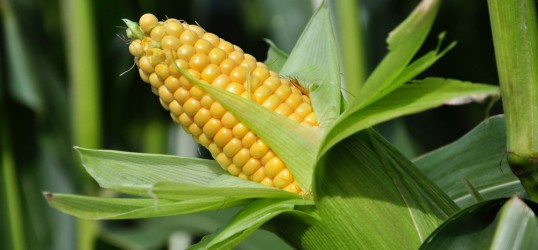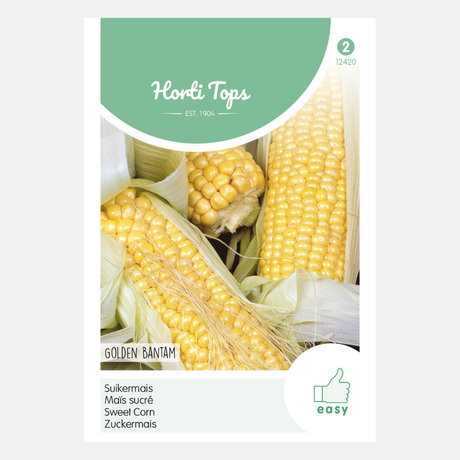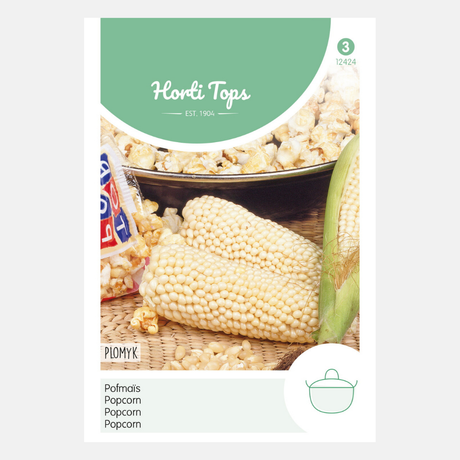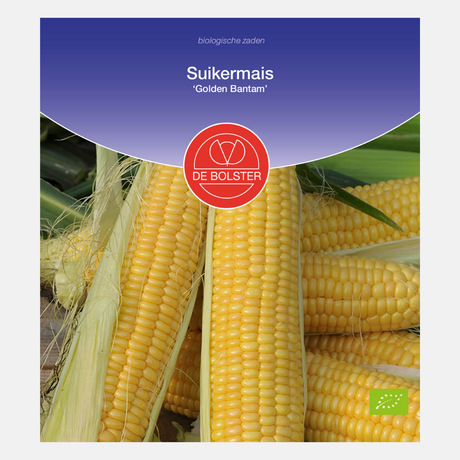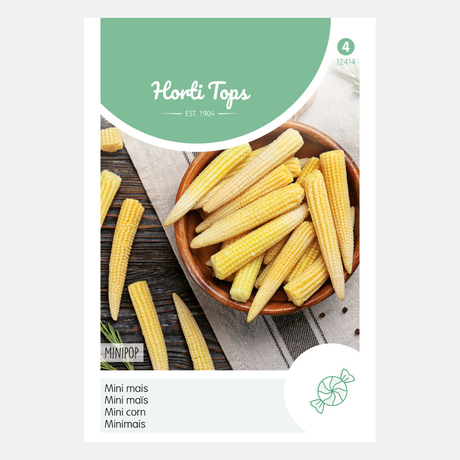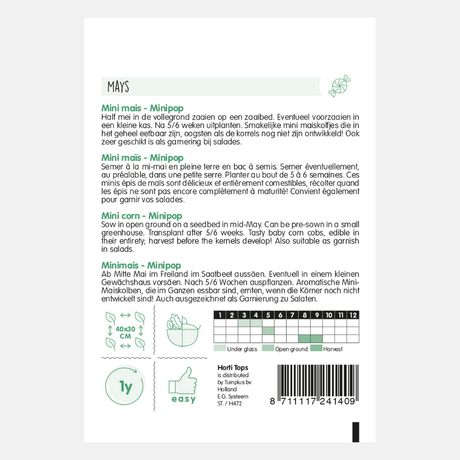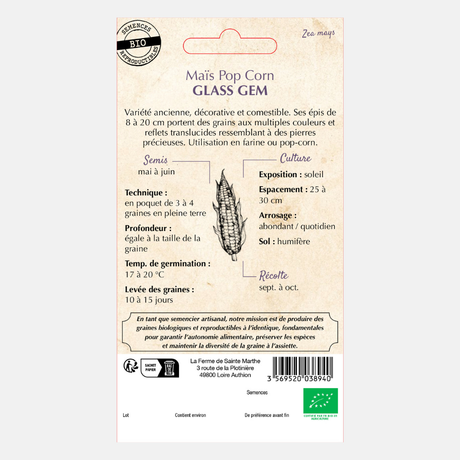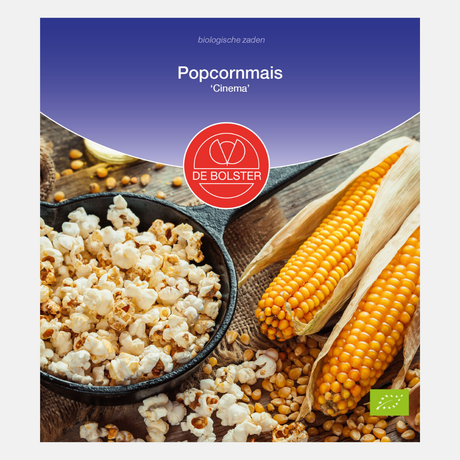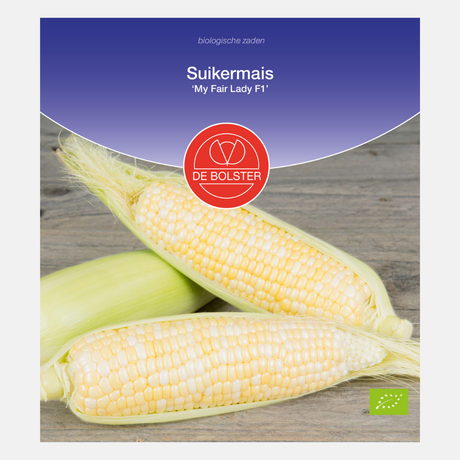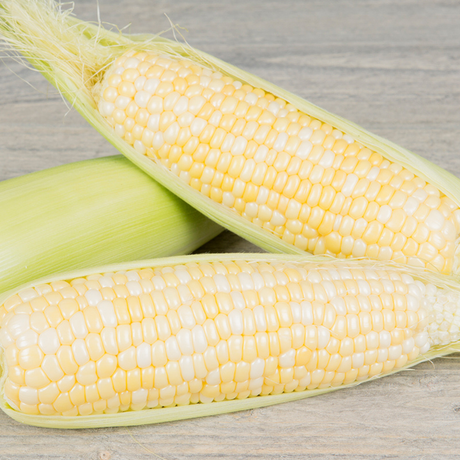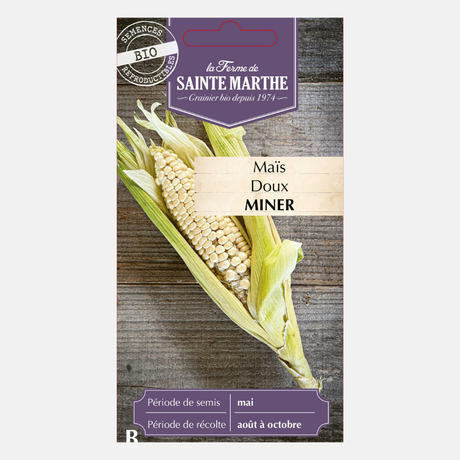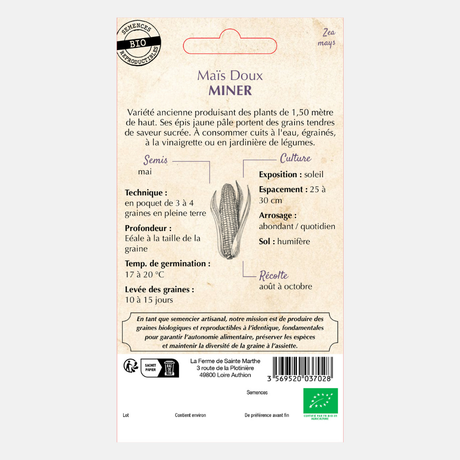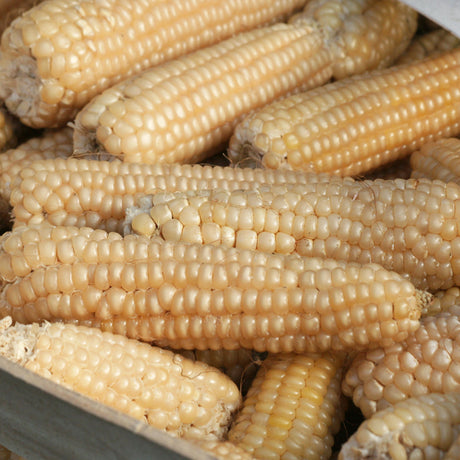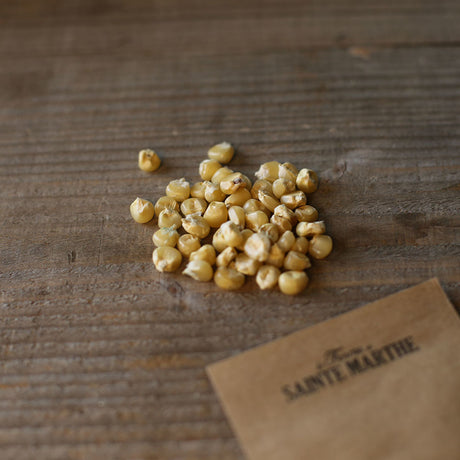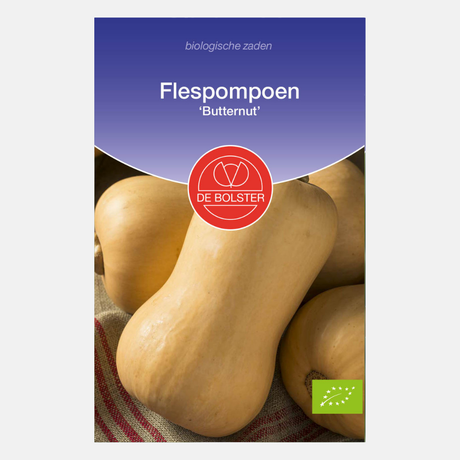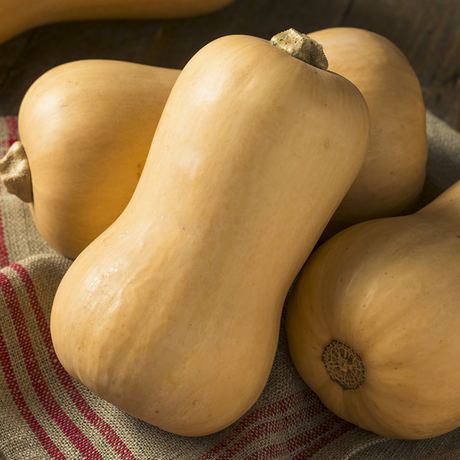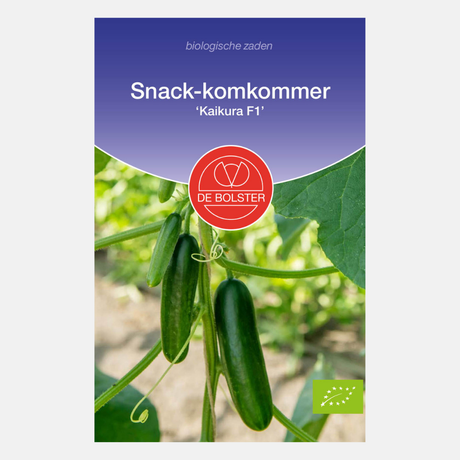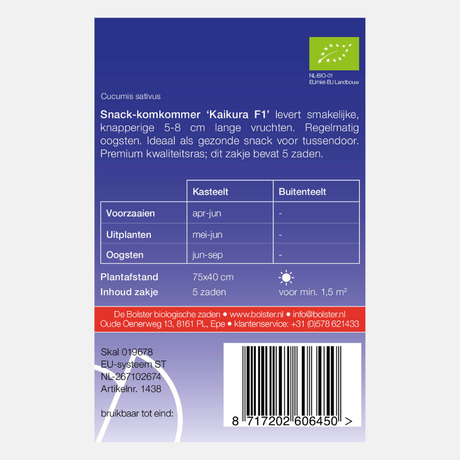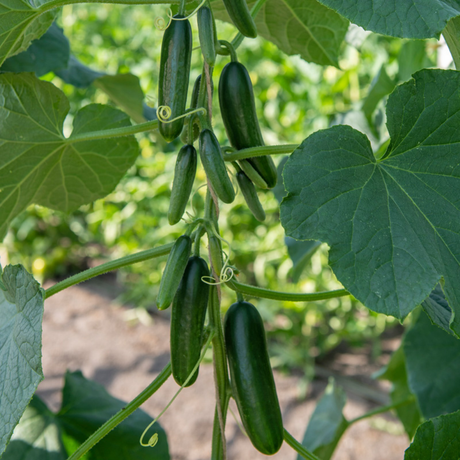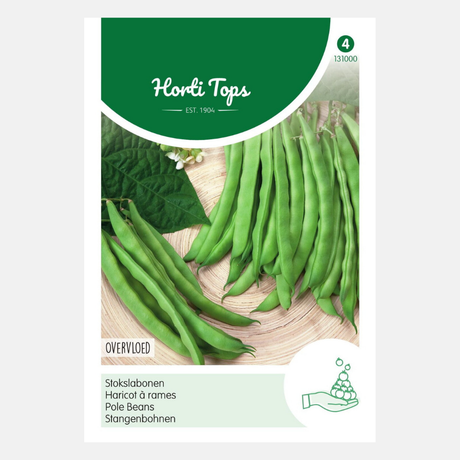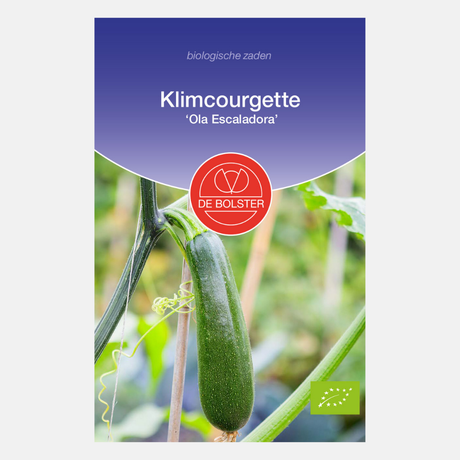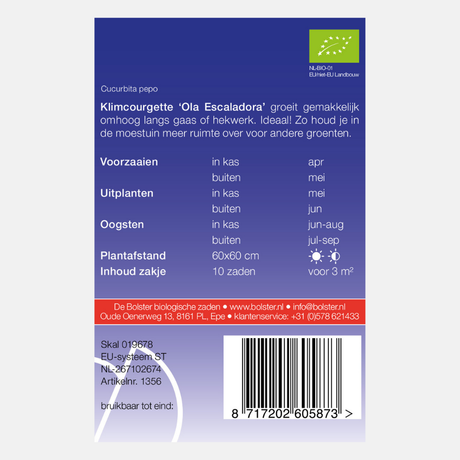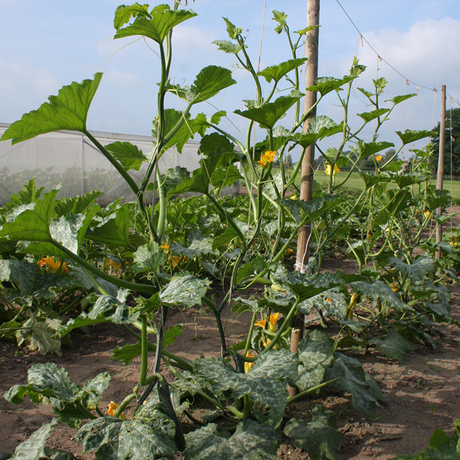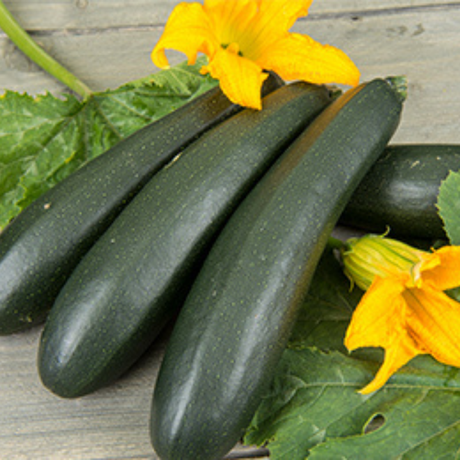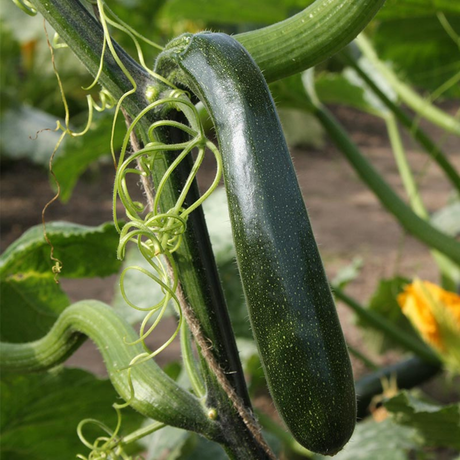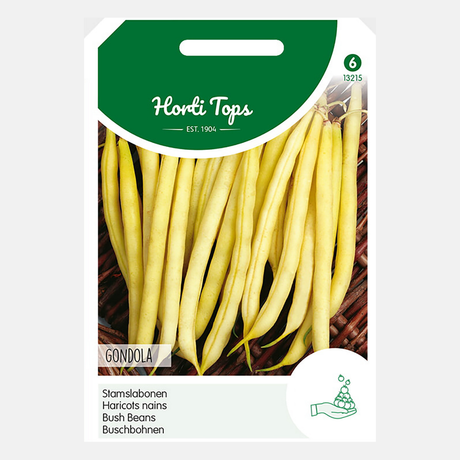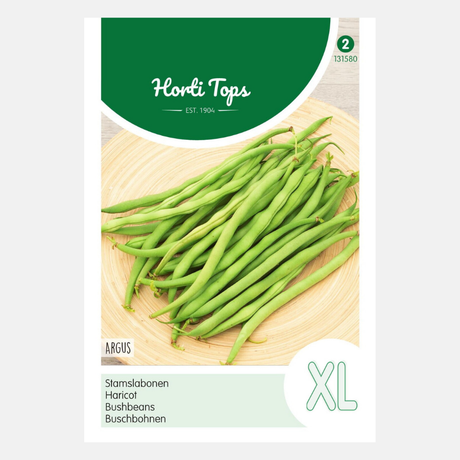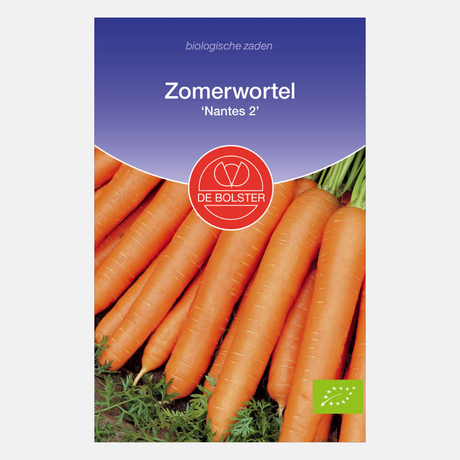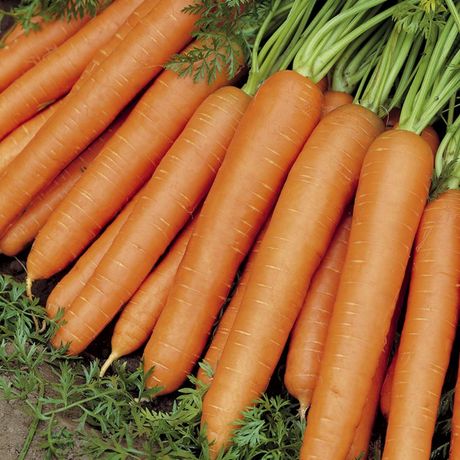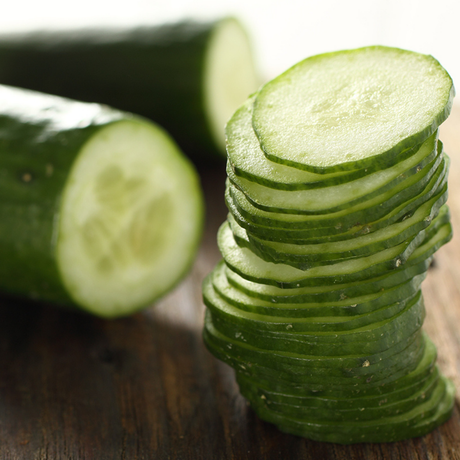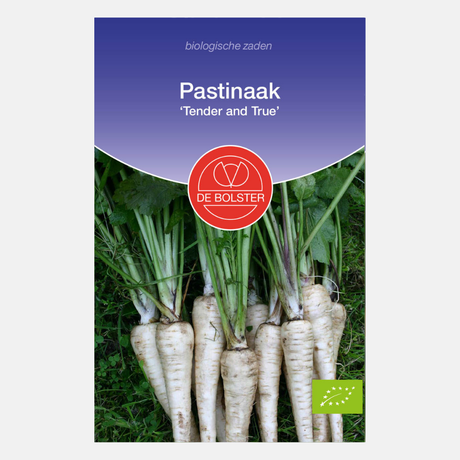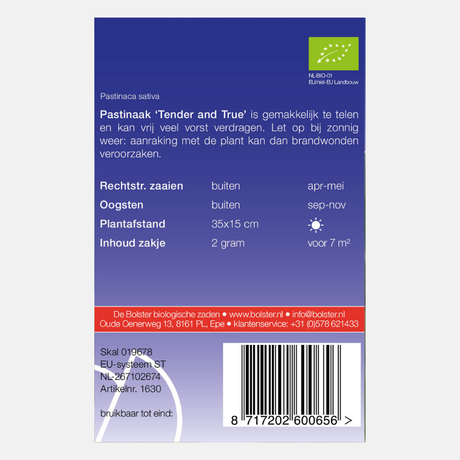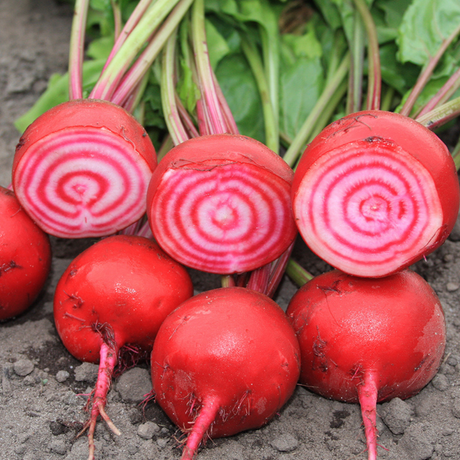- €3,42Unit price /Unavailable
- €1,84Unit price /Unavailable
- €2,93Unit price /Unavailable
Corn/Popcorn 'Plomyk' - type peppi
€2,23Unit price /Unavailable- €2,77Unit price /Unavailable
- €2,72Unit price /Unavailable
- €4,26Unit price /Unavailable
- €2,96Unit price /Unavailable
- €4,26Unit price /Unavailable
Sweetcorn 'My Fair Lady F1 BIO
€4,66Unit price /Unavailable- €4,26Unit price /Unavailable
Growing sweetcorn in pictures
Watch this video to see how Ruud demonstrates how to sow vegetables:

Growing Guide Growing Sweetcorn
Share information about your brand with your customers. Describe a product, make announcements, or welcome customers to your store.
Other vegetable seeds
View allBuy Corn Seed: Sunny Cobs From Your Own Garden
Whether you're looking for fresh sweetcorn or want to pop your own popcorn, growing corn is easier than you think. With just a few rows of corn in your garden, you can create something truly impressive. Some varieties grow even taller, creating an even more impressive effect, both literally and figuratively. The cob is the most important product of the corn plant. And the best part is: you'll harvest in abundance, right from your own garden. Did you know that corn cobs can come in a variety of colors, such as yellow, purple, and red? This makes growing corn not only delicious but also visually appealing.
Choosing the right seed is crucial for successful cultivation. Corn seeds can also be organic, depending on the customer's preference. You can easily buy corn seeds in our webshop by adding them to your shopping cart and checking out. When ordering corn seeds, there's a minimum purchase amount for free shipping. After ordering, your corn seeds will be delivered within a few days.
Introduction to corn seeds
Corn seeds are highly recommended for your vegetable garden, especially if you love vegetables with a story. You're essentially planting a piece of history—this unique grain originates from South America, where people discovered thousands of years ago how delicious and versatile corn can be. And what began in Mexico has since conquered the world—and rightly so! Whether you choose sweetcorn (that flavor, mmm), popcorn corn for your own evening snack, or another fun variety, corn seeds allow you to experiment in your own garden. You'll discover how different the flavors and colors can be—much more fun than the same old-fashioned stuff from the store. Plus, you're truly bringing a piece of tradition and history to your own backyard, and that just feels good. Sweetcorn comes in different varieties, such as 'Golden Bantam', 'Golden Rush', and 'My Fair Lady', which provides even more choice and variety. Early-maturing varieties have a lower FAO index and are ideal for colder or heavier soils.
Why corn in your garden?
Corn is a striking plant—tall, strong, and with full cobs. But it's also a very enjoyable vegetable to sow: you watch it grow, hear it rustle, and taste the results. As a grower, you ultimately receive a beautiful harvest as a reward for your work. Note: some types of corn are intended for consumption, while others are intended for ornamental purposes. Ornamental corn isn't necessarily edible and is often used for ornamental purposes. Corn is wind-pollinated, which is essential for a successful harvest, as the pollen grains are carried to the female flowers by the wind. Corn grows well in clay soil.
Benefits of sowing corn:
- Easy to grow in a sunny spot
- Gives high yield per plant
- Fun for kids – from sowing to harvesting
- Both sweetcorn and popcorn varieties available
- Perfect to combine with beans and pumpkin (the 'three sisters')
- Very suitable for beginner gardeners and ideal for applications such as barbecuing or snacks
- Silage maize is used whole to make silage and is important for the nutritional value of dairy cattle.
- Dairy farmers should choose varieties with high VEM yield and high digestibility of cell walls for maize silage
You can find these corn varieties at Plukkers
Sweetcorn 'Golden Bantam'
An ancient variety with a full, sweet corn flavor and origins dating back to traditional growing regions. It produces firm, golden-yellow cobs and thrives in open ground. This variety is perfectly suited to the Dutch climate.
Popcorn corn 'Cinema'
Want to make your own popcorn? This variety is widely used for making popcorn and produces small cobs with hard kernels that are perfect for popping. Fun and delicious. Popcorn corn also comes in varieties such as 'Cinema', 'Little Indian', and 'Ruby Red'.
Sweetcorn 'My Fair Lady F1'
Early-maturing F1 hybrid with a sweet flavor. Produces uniformly shaped cobs – perfect for grilling, steaming, or boiling. This corn is intended for human consumption and is excellent in a variety of dishes.
Sweetcorn 'Tasty Sweet F1'
A very sweet and juicy variety. This is a special type of sweetcorn popular with growers for its excellent flavor and reliability. The cobs are firm and retain their flavor even after cooking or freezing.
How to sow and care for corn
Corn loves sun, warmth, and space. You can sow corn from late April, depending on the temperature. Pre-sowing in pots is recommended: this protects the young plants from the cold and allows you to transplant them into the ground after germination, which depends on the temperature and conditions. Corn seeds can be pre-sown indoors in late March or early April. A temperature of at least 10°C is required for corn cultivation. Sow outdoors only after the risk of frost has passed. Corn can be sown directly into the ground when there is no risk of frost, usually from mid-May. Use vegetable seeds and pay attention to the correct sowing time for success. Corn seeds can also be pre-sown in pots before transplanting into the ground.
Plant in blocks rather than rows for better pollination. Sow seeds approximately 3 to 4 centimeters deep and space them 20 to 25 centimeters apart for optimal growth. The soil temperature should be at least 10 degrees Celsius at planting time, and the seeds should be sown 5-6 cm deep. Corn is wind-pollinated, which is essential for a successful harvest. Some varieties are also suitable for northern climates. Remove side shoots to direct energy to the main stem and cobs, improving growth and yield. Sufficient spacing is required between corn plants, at least 75 by 20 cm. Harvesting usually occurs in late summer.
Tips:
- Sowing time: mid-April to early June
- Sowing depth: 3–4 cm
- Distance: 35 cm between plants
- Location: sunny, nutritious and sheltered
- Water: regularly during dry periods
- Harvest: from August (sweetcorn, the cobs are edible); September (popcorn). Harvest when the cobs turn brown; this is a sign that the corn is ripe. Corn can usually be harvested when the tassels on the cobs turn brown and dry.
Candy corn or popcorn?
Choose sweetcorn for fresh cobs from the BBQ or from the pan. Choose popcorn corn if you enjoy homemade snacks with a story. Sweetcorn is primarily grown for human consumption and harvested when its sugar content is high. Corn originates in Mexico, where many traditional varieties originate and play an important role in Mexican culture and cuisine. Or just try both—they're very different plants, but both equally enjoyable.
Using corn in cooking – perfect in Mexican dishes
You probably know the feeling: that first fresh ear of corn from your own garden that you just can't resist. Corn is such a wonderful all-rounder that you can use in so many ways. That wonderfully sweet flavor of fresh sweetcorn is best enjoyed when you simply boil the cobs briefly, throw them on the barbecue, or—and we always love this—just nibble them raw while they're still young and tender. Those golden kernels add so much color and flavor to your salads, warm soups, and of course, those cozy Mexican evenings, and they're truly delicious with beans and other vegetables from your own garden. Corn has a good nutritional value, with lots of carbohydrates and fiber. However, overfertilization can lead to less sweet corn cobs. And we haven't even mentioned popcorn corn yet—what a fun activity for the whole family to dry it and then pop it into crispy popcorn. Growing different types of corn in your garden allows for endless variations in preparations and flavors – baking, grilling, boiling, popping, the sky's the limit. With homegrown corn from your own garden, you'll always create something special and get the most out of your crop. Corn should be eaten soon after harvest, especially sweetcorn. Enjoy your corn!
Reap the sweet taste you sowed
With corn in your garden, you not only add height but also flavor and enjoyment. The plant is impressive, thanks in part to the tall stalks on which the cobs grow. The yield is surprising, and the end result irresistible. Sow, grow, harvest, and enjoy – that's Plukkers.

